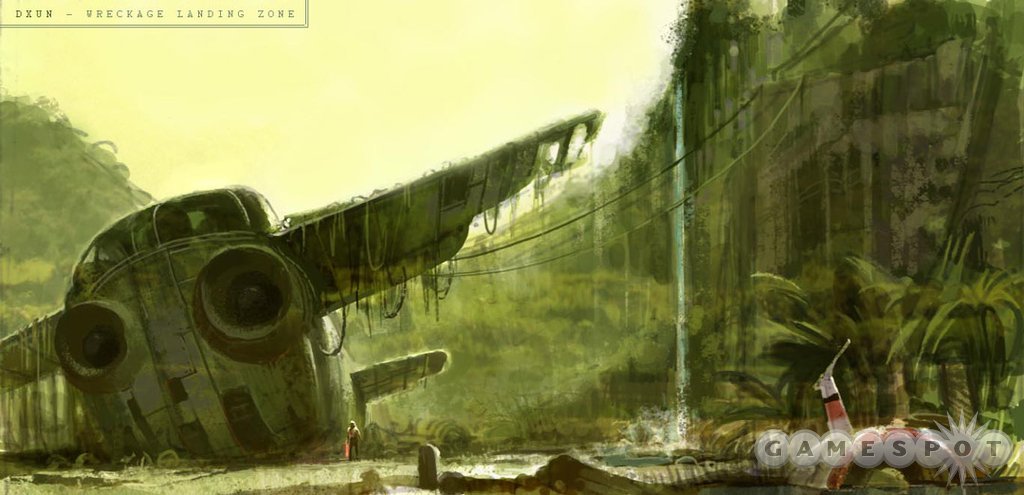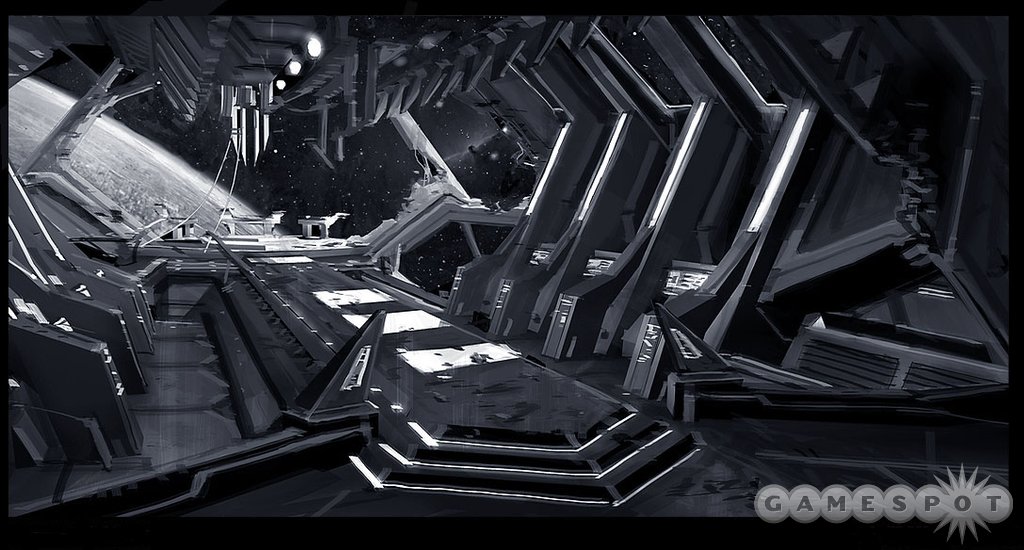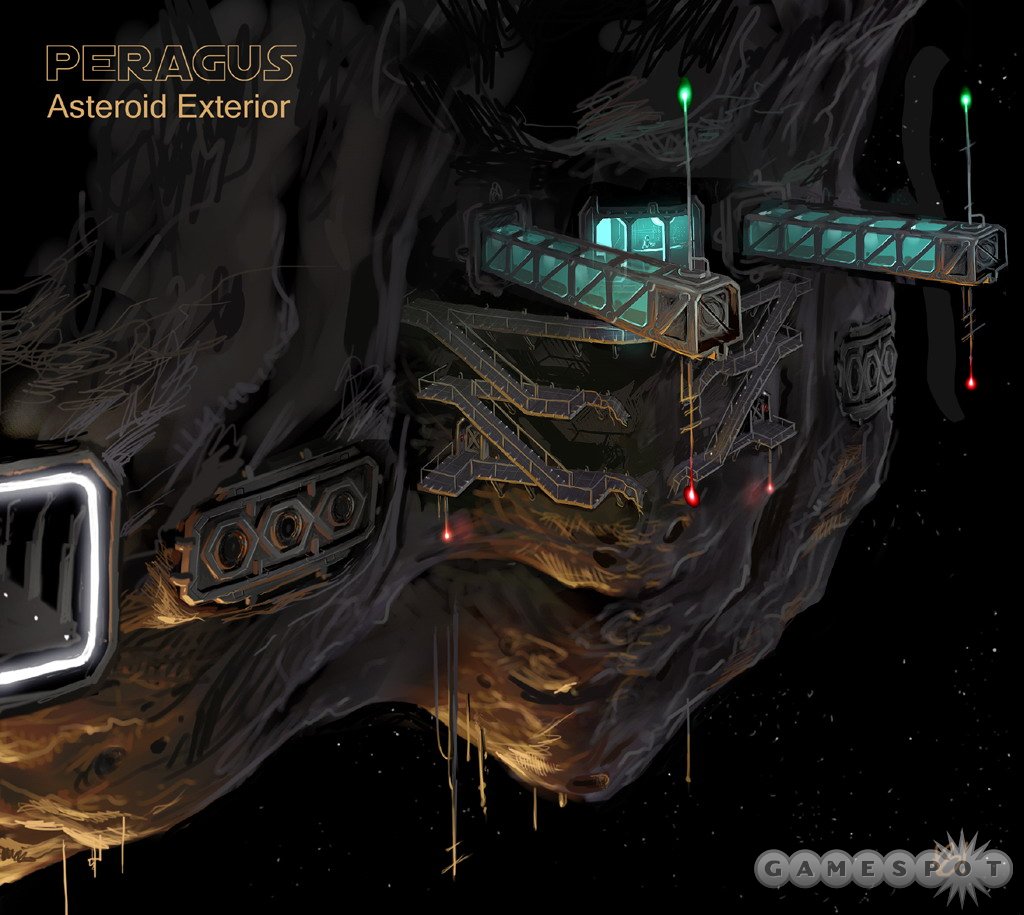Star Wars Knights of the Old Republic II: The Sith Lords Designer Diary #3
Lead artist Aaron Myers fills us in on how the art for Star Wars Knights of the Old Republic II: The Sith Lords came together in our latest designer diary.
The Art of The Sith Lords
By Aaron MeyersLead Artist, Obsidian Entertainment, Inc.
Having a lightsaber to my throat would definitely help in extracting a written word out of me. Too bad Mr. Parker doesn't have one. So here I am thinking about what I should write for this article. The pressure is high; it's almost as tough as the deadline we had to complete Star Wars Knights of the Old Republic II: The Sith Lords. Well, not that tough. What to write about? I will just make up some stuff like I did in college and hope no one notices the poor grammar and my so-called literary license. Before I begin, I would like to thank the geniuses who toiled and spent many hours creating art for this game: Aaron Brown, Brian Menze, Dennis Presnell, Doug Cope, Ed Lacabanne, Glenn Price, Lucas Feld, Mustazar Essa, Timothy Cox, Trent Campbell, TJ Frame, Robert Giampa, Will Harper, and David Espinoza. These guys are the real heroes who created the art magic that is KOTOR II; I was merely here at their beck and call. So thanks guys for making everything run smoothly and look super bitchin'! So, to not squander any more time, I'll just ramble on about neat work-related stuff.

During the first months I spent most of my time figuring out how to get art into the game and working on the creation pipeline. KOTOR II was developed using Max 3.1 with exporters and plug-ins to make game-ready content. After using Lightwave for the previous year or two, it was a challenge to start using Max 3.1 again, but I managed (mostly). I used a lot of time going in and out of files trying to figure out what the heck was going on and how and why things were set up the way they were. Most of the things in game development are pretty clear-cut, so it wasn't the hardest task. However, some of the things we couldn't figure out were sent up to BioWare so they could lend a helpin' hand and, well, help.
After we knew what we were doing, we started hiring new artists and finding people who could get the job done. This was one of the hardest tasks during the making of KOTOR II. I had to go through tons of applications, resumes, and demo reels. I was pleasantly surprised at the volume of people who wanted to work for Obsidian, considering we didn't have a title under our belt as Obsidian. So we hired a few people we thought would work well at Obsidian. We had about 10 artists and hired a few more toward the end so we could use their talents to finish up and then get them started on Neverwinter Nights. We also had three out-of-house artists who did various tasks, such as blocking out levels, concepting, and creating a few characters. We had an art intern who was going to school and working here on the side.

After the hiring, we started creating art content for KOTOR II. The process of making the game was mostly straightforward. We would make a very rough blocked level so the designers could run around and get a feel for the environment. Once they gave the thumbs-up, we would start making the levels that will be seen in the finished game. We worked on the art in waves or passes. The first pass after concepting is a rough of the level layout, with each pass after that adding more polish and detail into the geometry and textures. After each complete pass we would return to the first areas that we'd worked on, and make another pass through all the areas, adding more polish and cleaning things up as much as possible. On each pass through the art team was more efficient and the overall feel of the areas were getting better and better. So the first phase is always a rough, "blocked" level (temp textures, low detail geometry). Then we would move on to the built/textured and first pass lighting phase, and then go through the final polish phase until the level achieved what we call "SB" status. "SB" is a technical term that represents to the team that the level is "done" from an art perspective. This entire process would take anywhere from three to five weeks for the artist assigned to an area. Of course that doesn't include any bugs, which are usually minor and take place after that final polish stage.

The final stages of the game consisted of making sure everything looked polished while still being within the realm of what the designers had conceptualized at the start. During the creation of all content, I asked the artists to continually talk to the designers and make sure everything we made was within this realm. We were under a tight schedule and didn't have much time to go back and redo art, so everyone needed to be clear. The level of communication between the artists and designers was high and really helped to make everything efficient and on time. Good job!
Got a news tip or want to contact us directly? Email news@gamespot.com
Join the conversation